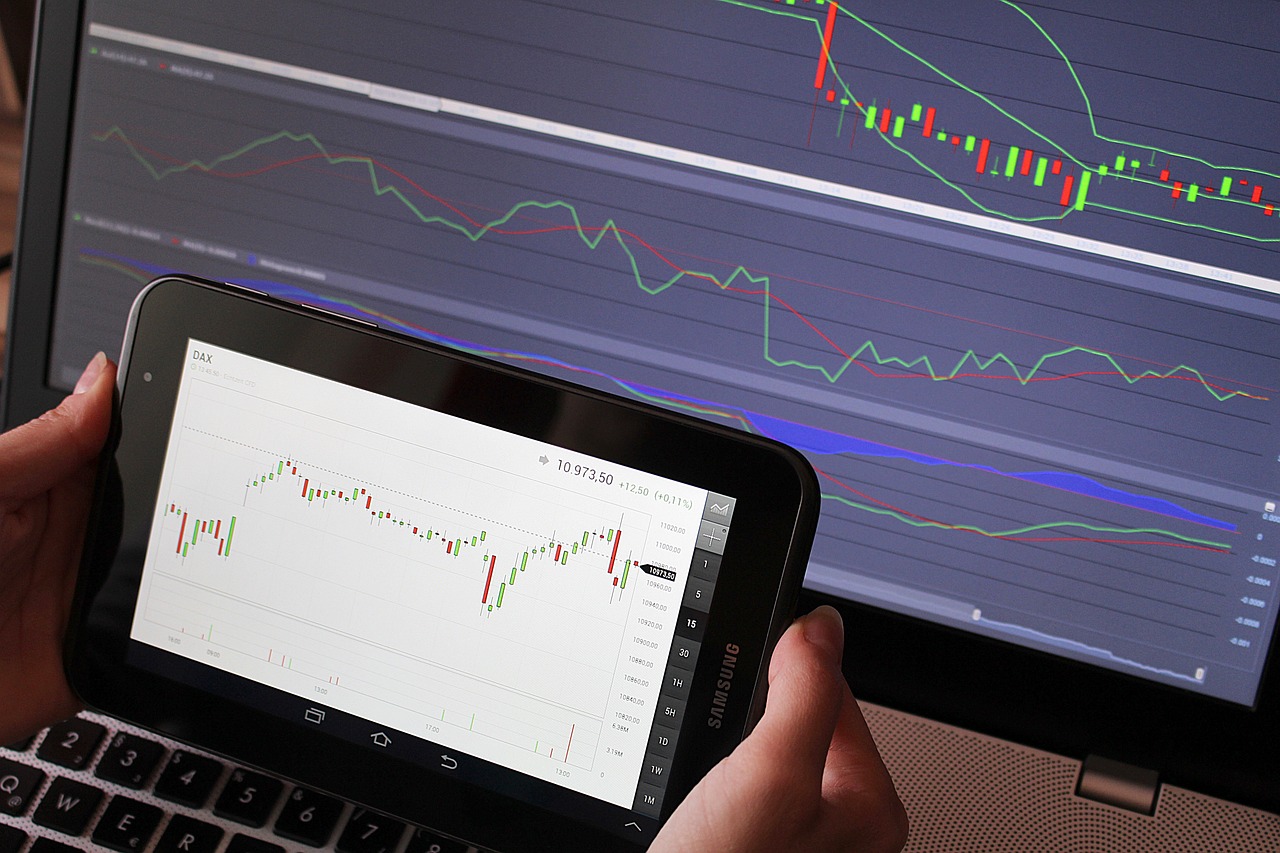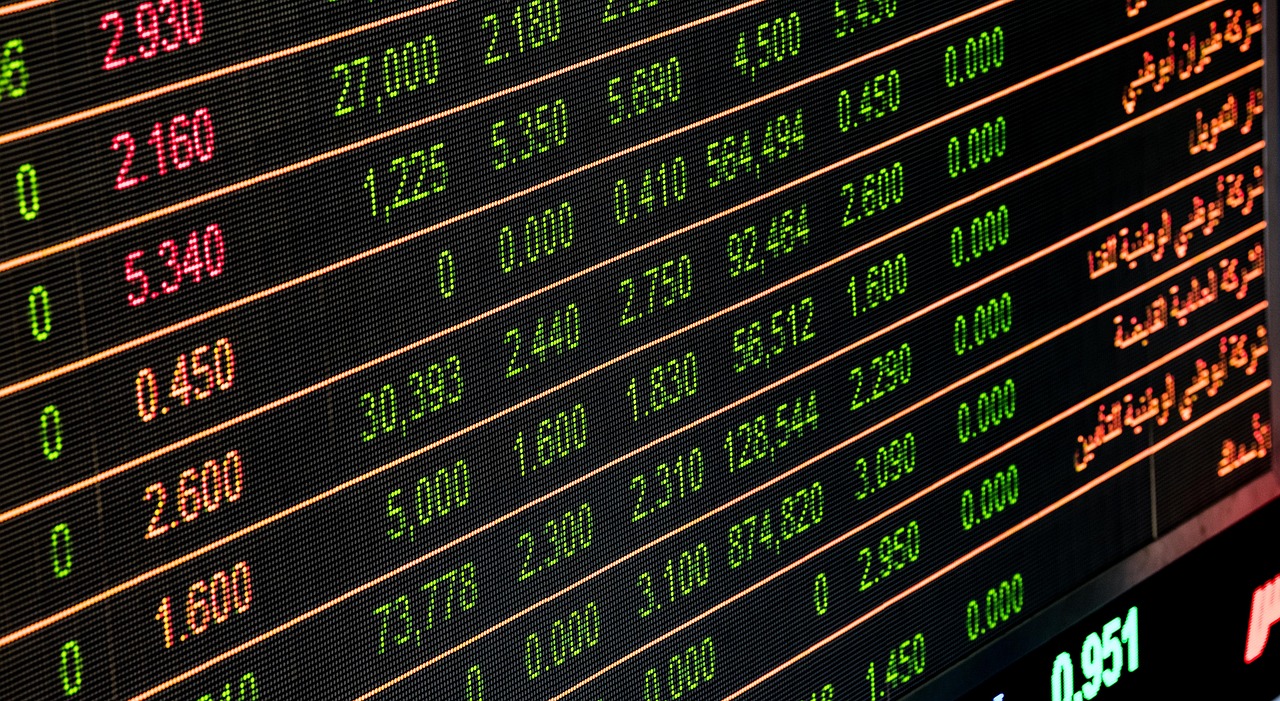Creating a Trade Setup Checklist
In the fast-paced world of trading, having a well-structured trade setup checklist can make all the difference between success and failure. Think of it as your personal roadmap, guiding you through the often tumultuous waters of the financial markets. A checklist not only streamlines your decision-making process but also helps you stay disciplined, ensuring that you don’t get swept away by emotions or impulsive choices. Just like a pilot relies on a pre-flight checklist to ensure safety and efficiency, traders too can benefit immensely from a systematic approach to their trades.
Imagine stepping into a chaotic trading environment without a plan. It’s easy to feel overwhelmed, right? That’s where the checklist comes in. It’s your anchor amidst the storm, providing clarity and focus. By breaking down the trading process into manageable components, you can systematically evaluate each trade opportunity. This structured approach not only enhances your confidence but also significantly boosts your overall trading performance.
So, what exactly should this checklist include? Well, it’s not just about marking off boxes; it’s about ensuring that you consider all critical factors before pulling the trigger on a trade. From market analysis to risk management strategies, each element plays a vital role in your trading journey. In the sections that follow, we will delve deeper into the essential components of a trade setup checklist, offering insights that can help you elevate your trading game.
A trade setup is essentially a specific scenario where a trader identifies potential entry and exit points based on prevailing market conditions. It’s akin to setting the stage for a performance; without the right setup, the show may not go on as planned. Understanding these setups is crucial for developing effective trading strategies. Think of it as laying the groundwork for a successful investment; if you don’t have a solid foundation, everything else is likely to crumble.
When traders talk about setups, they refer to a combination of factors that signal when to enter or exit a trade. This could be influenced by technical indicators, market sentiment, or even news events. The key is to recognize these signals and act accordingly. By mastering the art of identifying trade setups, you can position yourself ahead of the curve, making informed decisions that align with your trading goals.
A comprehensive checklist should encompass several critical elements, ensuring that you cover all bases before executing a trade. Here are some key components to consider:
- Market Analysis: Understanding the current market landscape is essential.
- Risk Management: Protecting your capital should always be a priority.
- Entry Triggers: Clearly defined criteria for entering a trade.
- Exit Triggers: Knowing when to exit can safeguard your profits.
By incorporating these elements into your checklist, you can create a robust framework that guides your trading decisions. Each component is interconnected, and neglecting one can lead to missed opportunities or unnecessary losses. Therefore, it’s vital to approach your checklist with diligence and attention to detail.
Utilizing various market analysis techniques is crucial for making informed trading decisions. Traders often rely on two primary forms of analysis: technical analysis and fundamental analysis. These methods help in identifying potential trading opportunities across different market conditions.
Technical analysis tools, such as charts, indicators, and patterns, assist traders in predicting future price movements based on historical data. Think of these tools as your crystal ball, providing insights into how prices may behave in the future. By analyzing trends and patterns, traders can enhance the accuracy of their trade setups, making it easier to identify optimal entry and exit points.
On the other hand, fundamental analysis involves evaluating economic indicators, company performance, and market news to understand the forces driving price movements. This method is like peeling back the layers of an onion; it reveals the underlying factors that influence market dynamics. By staying informed about economic events and company news, traders can make educated decisions that align with market trends.
Incorporating risk management strategies into your checklist is essential for protecting your capital and minimizing losses. Think of risk management as your safety net; it allows you to maintain a disciplined approach to trading, ensuring that you can weather the inevitable ups and downs of the market.
Defining clear entry and exit triggers within your checklist is crucial for maintaining consistency in your trading decisions. This ensures that trades are executed based on predetermined criteria rather than emotions. Establishing these triggers is akin to setting the rules of a game; it provides structure and clarity, allowing you to play without hesitation.
Establishing profit targets allows traders to define their expected returns and exit strategies. This ensures that you capitalize on successful trades while managing potential risks effectively. Without clear profit targets, it’s easy to get greedy or second-guess your decisions, leading to missed opportunities.
Implementing stop-loss orders is a vital component of risk management. These orders help limit potential losses by automatically closing trades at predetermined price levels. Think of stop-loss orders as your insurance policy; they safeguard your capital and provide peace of mind, allowing you to trade with confidence.
Q: What is a trade setup checklist?
A trade setup checklist is a structured list of criteria that traders use to evaluate potential trades, ensuring they consider all critical factors before executing a trade.
Q: Why is risk management important in trading?
Risk management is crucial because it helps protect your capital, minimizes losses, and ensures that you can continue trading in the long run.
Q: How can I improve my trading performance?
Improving trading performance involves developing a solid checklist, mastering market analysis techniques, and maintaining discipline in your trading approach.

Understanding Trade Setups
A trade setup is like a carefully drawn map for a treasure hunt. It defines the specific scenario where a trader identifies potential entry and exit points based on current market conditions. Just as a treasure hunter wouldn’t embark on their quest without a map, traders must not dive into the market without a solid understanding of their trade setups. These setups are crucial for effective trading strategies and can significantly enhance the decision-making process.
When we talk about trade setups, we're essentially discussing the convergence of various factors that signal a good opportunity to buy or sell. Think of it as a recipe: you need the right ingredients in the right amounts to create a delicious dish. Similarly, a successful trade setup requires a mix of market analysis, risk management, and emotional discipline. Without these elements, a trader might find themselves lost in the vast ocean of market fluctuations.
To break it down further, a well-defined trade setup includes:
- Market Conditions: Understanding whether the market is trending or ranging can dictate the type of setup you should pursue.
- Technical Indicators: Tools like moving averages or Relative Strength Index (RSI) can provide insights into potential price movements.
- Market Sentiment: Gauging the mood of other traders can help in predicting market reactions.
By combining these factors, traders can craft setups that not only highlight potential opportunities but also minimize risks. Imagine you're setting up a fishing line: you wouldn’t just toss it into the water without knowing where the fish are biting. Similarly, understanding trade setups allows traders to position themselves in the market where the odds are more favorable.
Moreover, it's essential to recognize that trade setups are not static; they evolve with market conditions. This fluidity means that traders must remain vigilant and adaptable, adjusting their strategies as new information becomes available. Just as a skilled sailor adjusts their sails according to the changing winds, traders must be prepared to pivot their approach based on the latest data and analysis.
In summary, understanding trade setups is fundamental for any trader looking to enhance their performance. By treating each setup as a unique opportunity and being aware of the various factors at play, traders can make more informed decisions, ultimately leading to better outcomes in their trading journeys.

Key Components of a Checklist
When it comes to trading, having a well-structured checklist is like having a trusty map in uncharted territory. It guides you through the complexities of the market, ensuring you don't miss critical steps that could lead to success or failure. A comprehensive checklist should encompass several key components that are essential for informed decision-making. These components include market analysis, risk management, and entry triggers. By incorporating these elements, traders can develop a systematic approach that enhances their overall trading performance.
First and foremost, market analysis is the backbone of any trading strategy. This involves evaluating the market environment to identify potential opportunities. Traders should dive deep into both technical and fundamental analysis. Technical analysis uses historical price data and chart patterns to forecast future price movements, while fundamental analysis focuses on economic indicators and news events that can impact market behavior. Combining these two approaches allows traders to have a well-rounded view of the market.
Next on the checklist is risk management. This is arguably one of the most critical aspects of trading. Without a solid risk management strategy, even the best trading setups can lead to significant losses. Traders should determine how much capital they are willing to risk on each trade, which can be calculated as a percentage of their total trading account. For instance, many traders choose to risk no more than 1-2% of their capital on a single trade. This disciplined approach helps to protect their capital and allows them to stay in the game longer.
Additionally, it's crucial to define entry triggers that signal when to execute a trade. These triggers can be based on specific price levels, technical indicators, or chart patterns. For example, a trader might set a trigger to buy when a stock breaks above a certain resistance level or when a moving average crossover occurs. Having these predetermined criteria helps eliminate emotional decision-making, allowing traders to stick to their strategy even during volatile market conditions.
| Component | Description |
|---|---|
| Market Analysis | Evaluating market conditions using technical and fundamental methods. |
| Risk Management | Strategies to protect capital and minimize losses. |
| Entry Triggers | Predefined signals for executing trades based on market conditions. |
Incorporating these key components into a trading checklist not only streamlines the decision-making process but also enhances the trader's ability to stay focused and disciplined. It's like having a well-oiled machine where every part works in harmony to achieve one goal: successful trading. So, the next time you sit down to analyze the market, make sure your checklist is comprehensive and covers all these essential elements.
- What is the purpose of a trade setup checklist?
The purpose of a trade setup checklist is to provide traders with a structured approach to decision-making, ensuring they consider all critical factors before executing a trade. - How can market analysis improve trading performance?
Market analysis helps traders identify potential entry and exit points by evaluating market conditions, which can lead to more informed and profitable trading decisions. - What is the significance of risk management?
Risk management is essential for protecting capital, minimizing losses, and maintaining a disciplined approach to trading, allowing traders to survive in the long run. - How do entry triggers help in trading?
Entry triggers provide clear criteria for executing trades, helping traders avoid emotional decision-making and ensuring consistency in their trading strategy.

Market Analysis Techniques
When it comes to trading, understanding the market is your compass. Without it, you might as well be sailing blindfolded! Market analysis techniques serve as the tools that help traders navigate through the often turbulent waters of financial markets. By employing both technical and fundamental analysis, traders can uncover potential trading opportunities and make informed decisions. So, what exactly do these techniques entail?
First off, technical analysis is all about the numbers. It involves studying historical price movements and using various tools to predict future trends. Think of it like looking at a map before embarking on a journey; you want to know where you’ve been to figure out where you’re going. Traders utilize charts, indicators, and patterns to identify potential entry and exit points. For instance, a trader might use moving averages to smooth out price fluctuations, helping them spot potential trends more clearly.
On the flip side, we have fundamental analysis, which dives deeper into the economic and financial factors that drive market movements. This method is akin to reading the weather forecast before deciding to go hiking. It involves evaluating economic indicators, company performance, and relevant news that could impact prices. For example, a trader might analyze unemployment rates or interest rates to gauge the overall health of an economy. The idea is to understand the underlying forces at play, which can significantly influence market behavior.
To make the most out of these analyses, traders often combine both techniques. This dual approach allows them to make well-rounded decisions. Here’s a quick comparison of the two:
| Technical Analysis | Fundamental Analysis |
|---|---|
| Focuses on price movements and patterns. | Focuses on economic indicators and news. |
| Uses charts and indicators. | Uses financial statements and economic reports. |
| Short-term trading strategies. | Long-term investment strategies. |
In conclusion, mastering market analysis techniques is crucial for any trader looking to enhance their decision-making process. By effectively combining both technical and fundamental analysis, you can create a robust trading strategy that not only identifies potential opportunities but also helps you manage risks effectively. Remember, the market is a living entity, and understanding its behavior can make all the difference in your trading journey!
- What is the best market analysis technique? - There’s no one-size-fits-all answer; it often depends on your trading style. Many traders find a combination of technical and fundamental analysis to be most effective.
- How often should I analyze the market? - It varies based on your trading strategy. Day traders may analyze the market multiple times a day, while long-term investors might do it weekly or monthly.
- Can I rely solely on technical analysis? - While technical analysis can provide valuable insights, it's wise to consider fundamental factors as well for a more comprehensive view of the market.

Technical Analysis Tools
When it comes to trading, having the right tools at your disposal can make all the difference. are like a trader's best friends—they help you decode the complex language of the market. These tools enable traders to analyze historical price data, identify trends, and predict future price movements. Imagine trying to navigate a dense forest without a map; that’s what trading without technical analysis tools feels like!
Among the most popular technical analysis tools are charts, indicators, and patterns. Each of these tools plays a vital role in helping traders make informed decisions. Charts, for instance, visually represent price movements over time, allowing traders to spot trends and reversals at a glance. With various types of charts available—like line charts, bar charts, and candlestick charts—traders can choose the one that best suits their style and strategy.
Indicators, on the other hand, are mathematical calculations based on price and volume data that provide insights into market conditions. Some of the most commonly used indicators include:
- Moving Averages: These help smooth out price data to identify trends over a specific period.
- Relative Strength Index (RSI): This momentum oscillator measures the speed and change of price movements, helping traders identify overbought or oversold conditions.
- Bollinger Bands: These bands expand and contract based on market volatility, providing insights into potential price movements.
Patterns, such as head and shoulders or flags, can also provide valuable signals about future price movements. Recognizing these patterns can be akin to reading the signs of an approaching storm—if you know what to look for, you can prepare accordingly!
To further illustrate the importance of technical analysis tools, let’s consider a simple table that outlines how different tools can be applied in trading:
| Tool | Purpose | Example |
|---|---|---|
| Charts | Visual representation of price movements | Candlestick chart |
| Indicators | Mathematical calculations to identify trends | Moving Average |
| Patterns | Formation recognition for predicting price movements | Head and Shoulders |
In summary, technical analysis tools are indispensable for traders who wish to enhance their decision-making process. By leveraging these tools, you can gain a deeper understanding of market dynamics, identify lucrative trading opportunities, and ultimately improve your trading performance. So, whether you’re a seasoned trader or just starting, make sure to equip yourself with these powerful tools to navigate the trading landscape with confidence!
Q: What is the best technical analysis tool for beginners?
A: For beginners, starting with simple tools like moving averages and basic candlestick charts can be very effective. As you gain experience, you can explore more complex indicators and patterns.
Q: How do I know which indicators to use?
A: The choice of indicators depends on your trading strategy and the market conditions. It’s often beneficial to use a combination of indicators to confirm signals and enhance accuracy.
Q: Can technical analysis guarantee successful trades?
A: No, technical analysis cannot guarantee success, but it can significantly improve your chances by providing structured insights and data-driven strategies.

Fundamental Analysis Factors
When it comes to trading, understanding the is like having a compass in a dense forest. It guides you through the complexities of market dynamics, helping you make informed decisions. At its core, fundamental analysis involves evaluating various economic indicators, company performance metrics, and market news to grasp the underlying forces that drive price movements. This approach is essential for traders who want to look beyond the charts and indicators, diving deep into the very essence of what influences market behavior.
One of the primary factors to consider is the economic indicators. These are statistical data points that reflect the overall health of an economy. Key indicators include:
- Gross Domestic Product (GDP): This measures the total value of all goods and services produced over a specific time period. A growing GDP often signals a healthy economy.
- Unemployment Rate: High unemployment can indicate economic distress, while low unemployment suggests a thriving job market.
- Inflation Rate: Measured by the Consumer Price Index (CPI), inflation affects purchasing power and can influence central bank policies.
Additionally, company performance metrics are vital in assessing individual stocks. Traders should examine earnings reports, revenue growth, and profit margins. For instance, a company that consistently beats earnings expectations may be viewed positively, driving its stock price up. Conversely, disappointing earnings can lead to a rapid decline in stock value.
Moreover, keeping an eye on market news is crucial. News events, such as changes in government policies, geopolitical tensions, or technological advancements, can create significant volatility in the markets. For example, a new trade agreement might boost certain sectors, while regulatory changes could negatively impact others. Understanding how these news events correlate with price movements can provide traders with a competitive edge.
In summary, fundamental analysis is not just about numbers; it's about understanding the story behind those numbers. By analyzing economic indicators, company performance, and market news, traders can develop a comprehensive view of the market. This holistic approach enables them to make more informed trading decisions, ultimately enhancing their overall trading performance.
Q: What is the difference between technical and fundamental analysis?
A: Technical analysis focuses on price movements and chart patterns, while fundamental analysis examines the underlying economic factors that influence those price movements.
Q: How often should I review fundamental factors?
A: It’s advisable to review fundamental factors regularly, especially before making significant trading decisions or during major economic announcements.
Q: Can fundamental analysis predict short-term market movements?
A: While fundamental analysis is more effective for long-term trends, it can influence short-term movements, especially during major news events.

Risk Management Strategies
When it comes to trading, risk management is not just a safety net; it’s the backbone of a sustainable trading strategy. Think of it as the seatbelt in your car—while you hope you never need it, you’re grateful for it when the unexpected happens. Without a solid risk management strategy, traders can find themselves on a rollercoaster of emotions, often leading to poor decision-making and significant losses. So, how do you effectively manage risk in your trading endeavors? Here are a few key strategies that can help you navigate the choppy waters of the financial markets.
First and foremost, position sizing is crucial. This involves determining how much of your capital you are willing to risk on a single trade. A common rule of thumb is to risk no more than 1-2% of your total trading capital on any given trade. This way, even if a series of trades go against you, your capital remains intact, allowing you to trade another day. For example, if you have a trading account of $10,000, risking 1% means you would only risk $100 on a single trade.
Next up is the importance of setting stop-loss orders. These are predefined levels at which you will exit a losing trade to prevent further losses. Implementing stop-loss orders is akin to having an emergency exit plan; it ensures you don’t get too emotionally attached to a losing position. For instance, if you bought a stock at $50, you might set a stop-loss order at $48. If the price drops to that level, your trade automatically closes, limiting your loss to $2 per share.
Moreover, it’s essential to continuously monitor your trades and adjust your strategies as needed. The market is constantly changing, and what worked yesterday may not work today. By keeping an eye on your trades and the overall market conditions, you can make informed decisions about whether to stay in a trade or cut your losses. This adaptability is vital, especially in volatile markets.
Another effective strategy is to diversify your trades. Just like you wouldn’t put all your eggs in one basket, you shouldn’t concentrate your investments in one asset or market. By spreading your capital across different trades, you can mitigate risks. For example, if you’re trading stocks, consider investing in different sectors such as technology, healthcare, and consumer goods. This way, if one sector underperforms, your other investments can help cushion the blow.
Lastly, maintaining a trading journal can be incredibly beneficial. Documenting your trades, including your thought process, emotions, and outcomes, allows you to learn from both your successes and failures. Over time, you’ll develop a clearer understanding of what works for you and what doesn’t, leading to improved decision-making and risk management.
In summary, effective risk management strategies are essential for any trader looking to thrive in the market. By implementing position sizing, stop-loss orders, continuous monitoring, diversification, and keeping a trading journal, you can protect your capital and enhance your trading performance. Remember, trading is not just about making profits; it's also about preserving your capital for future opportunities.
- What is the most important aspect of risk management?
Position sizing is often considered the most critical aspect, as it helps determine how much capital you risk on each trade. - How do I set a stop-loss order?
You can set a stop-loss order through your trading platform by specifying the price level at which you want to exit a losing trade. - Is diversification always necessary?
While not mandatory, diversification can help mitigate risks and reduce the impact of a poor-performing asset on your overall portfolio. - How can a trading journal help me?
A trading journal allows you to track your performance over time, helping you identify patterns and improve your trading strategy based on past experiences.

Entry and Exit Triggers
When it comes to trading, having a solid plan is like having a map in uncharted territory. You wouldn’t venture into the wild without a compass, right? Similarly, defining clear within your trading checklist is essential for navigating the markets successfully. These triggers act as your guiding stars, helping you make informed decisions rather than emotional ones. But what exactly are these triggers, and why are they so crucial?
Entry triggers are specific conditions that signal when it’s the right time to enter a trade. Think of them as the green light at a traffic signal, letting you know it’s safe to go. Common entry triggers might include a stock breaking above a resistance level, a moving average crossover, or a specific candlestick pattern that indicates a bullish trend. By having these criteria laid out, you can avoid the common pitfall of jumping into trades based on gut feelings or market noise.
On the flip side, exit triggers are just as important. They are the criteria that tell you when to cash out and take your profits or cut your losses. Imagine you’re on a roller coaster; you wouldn’t want to stay on it forever, right? You need to know when to get off! Exit triggers could be based on reaching a certain profit target, a reversal pattern emerging, or a trailing stop that adjusts as the price moves in your favor. Setting these parameters helps you lock in gains while minimizing potential losses.
To make it even clearer, let’s look at a simple table that outlines some common entry and exit triggers:
| Trigger Type | Condition | Example |
|---|---|---|
| Entry Trigger | Price breaks above resistance | Stock XYZ breaks $50 |
| Entry Trigger | Moving average crossover | 50-day MA crosses above 200-day MA |
| Exit Trigger | Reaches profit target | Sell when stock hits $60 |
| Exit Trigger | Trailing stop activated | Price drops 5% from peak |
By clearly defining these triggers, you create a structured approach that enhances your trading discipline. It’s like having a safety net; you know when to jump in and when to pull back. Furthermore, having these triggers documented in your checklist ensures that you remain consistent across different trades, which is key to long-term success.
In summary, your entry and exit triggers are critical components of your trading strategy. They provide clarity and direction, helping you to make decisions based on logic rather than emotions. So, before you dive into the next trade, take a moment to revisit your checklist and ensure your triggers are clearly defined. This simple step can make all the difference in your trading journey!
- What are entry and exit triggers? Entry and exit triggers are specific conditions that guide traders on when to enter or exit a trade.
- Why are triggers important? They help traders make informed decisions based on predefined criteria, reducing the influence of emotions.
- Can I modify my triggers? Absolutely! It’s important to review and adjust your triggers based on your trading style and market conditions.

Setting Profit Targets
Setting profit targets is a critical aspect of any trading strategy, acting as a roadmap that guides traders towards their financial goals. Think of profit targets as the finish line in a race; they give you a clear objective to strive for while keeping you focused and motivated. Without them, you might find yourself wandering aimlessly through the market, unsure of when to cash out. So, how do you effectively set these targets? Let's dive into it!
First and foremost, it’s essential to understand that profit targets should be realistic and based on thorough analysis rather than wishful thinking. Traders often fall into the trap of setting overly ambitious targets, which can lead to disappointment and emotional trading decisions. A good rule of thumb is to evaluate the historical price movements of the asset you’re trading. For instance, if a stock typically moves 5% in a week, setting a target of 15% might be unrealistic. Instead, aim for targets that are achievable based on past performance and current market conditions.
Another effective method for setting profit targets is to utilize a risk-reward ratio. This means that for every dollar you risk, you should aim to make a specific multiple in profit. A common ratio used by traders is 1:2, meaning if you risk $100, your profit target should be set at $200. This approach not only helps in setting clear targets but also reinforces the importance of risk management in trading.
Here’s a quick breakdown of how to calculate profit targets using the risk-reward ratio:
| Risk Amount | Target Amount (1:2 Ratio) |
|---|---|
| $100 | $200 |
| $50 | $100 |
| $200 | $400 |
Moreover, it's crucial to adjust your profit targets based on market volatility. In a highly volatile market, you might want to set wider targets to account for price swings, while in a stable market, tighter targets could be more appropriate. This adaptability can significantly enhance your trading performance.
Lastly, always remember to review and adjust your profit targets regularly. The market is dynamic, and what worked yesterday may not work today. By keeping your targets flexible and in tune with market conditions, you can better position yourself for success. So, as you prepare to set your profit targets, keep these strategies in mind to ensure you’re not just aiming for the stars but also landing safely on solid ground!
- What is a profit target? A profit target is a predetermined price level at which a trader plans to close a trade to realize profits.
- How do I set a realistic profit target? Analyze historical price movements and use risk-reward ratios to determine achievable targets.
- Why is it important to adjust profit targets? Market conditions change frequently, and adjusting your targets helps maintain relevance and effectiveness in your trading strategy.

Stop-Loss Orders
In the world of trading, emotions can often cloud judgment, leading to impulsive decisions that may result in significant losses. This is where come into play. A stop-loss order is essentially a safety net, designed to automatically close a trade when the price reaches a predetermined level. By setting these orders, traders can protect their capital and manage their risk more effectively. Think of it as a seatbelt in a car; it won’t prevent an accident, but it can significantly reduce the impact.
Implementing stop-loss orders is crucial for any trader looking to maintain a disciplined approach. Without them, the temptation to hold onto a losing position in hopes of a market reversal can be overwhelming. This often leads to larger losses than anticipated. By defining a clear exit strategy with a stop-loss, traders can take emotion out of the equation and stick to their trading plan. It’s all about having a plan and sticking to it, right?
When setting a stop-loss order, there are several factors to consider:
- Market Volatility: In highly volatile markets, prices can swing dramatically. A tight stop-loss might trigger too early, while a wider one could expose you to larger losses.
- Trade Strategy: Different trading strategies may require different stop-loss placements. For example, day traders might set tighter stops compared to swing traders.
- Support and Resistance Levels: Placing stop-loss orders just below support levels or above resistance levels can help you avoid getting stopped out prematurely.
To illustrate how stop-loss orders work, let’s consider a simple example. Imagine you purchase shares of a stock at $50, and you decide to set a stop-loss order at $45. If the stock price drops to $45, your stop-loss order triggers, selling your shares automatically. This means you’ve limited your loss to just $5 per share, rather than letting it drop further and potentially losing much more.
It’s also important to note that there are different types of stop-loss orders:
| Type of Stop-Loss Order | Description |
|---|---|
| Standard Stop-Loss | Closes the position when the market price hits the stop-loss level. |
| Trailing Stop-Loss | Moves with the market price, allowing for potential gains while still protecting against losses. |
| Guaranteed Stop-Loss | Ensures the order will be executed at the specified price, even in volatile markets. |
In conclusion, stop-loss orders are an essential tool for traders of all levels. They not only help in protecting your investment but also instill a sense of discipline in your trading approach. By incorporating stop-loss orders into your trading strategy, you can minimize emotional decision-making and focus on what truly matters: making informed, calculated trades.
- What is a stop-loss order? A stop-loss order is an instruction to sell a security when it reaches a certain price, helping to limit potential losses.
- How do I determine where to set my stop-loss? Consider factors such as market volatility, your trading strategy, and key support and resistance levels.
- Can I adjust my stop-loss order after placing it? Yes, you can modify your stop-loss order at any time as long as the market is open.
Frequently Asked Questions
- What is a trade setup checklist?
A trade setup checklist is a structured tool that traders use to evaluate potential trades. It helps in organizing thoughts and ensuring that all critical factors, such as market analysis, risk management, and entry/exit triggers, are considered before making a trading decision.
- Why is market analysis important in trading?
Market analysis is crucial because it provides insights into market trends and conditions. By utilizing both technical and fundamental analysis, traders can identify potential trading opportunities and make more informed decisions, which can significantly improve their trading outcomes.
- What are some common technical analysis tools?
Common technical analysis tools include charts, indicators (like moving averages and RSI), and chart patterns (such as head and shoulders or flags). These tools help traders predict future price movements based on historical data, enhancing the accuracy of their trade setups.
- How does fundamental analysis influence trading?
Fundamental analysis examines economic indicators, company performance, and news events to understand the forces driving price movements. By evaluating these factors, traders can gauge market sentiment and make better trading decisions based on the underlying economic conditions.
- What are risk management strategies?
Risk management strategies are techniques used to protect capital and minimize losses in trading. This includes setting stop-loss orders, defining position sizes, and determining risk-reward ratios to maintain a disciplined approach and safeguard investments.
- What are entry and exit triggers?
Entry and exit triggers are specific criteria that traders use to decide when to enter or exit a trade. Having clear triggers helps maintain consistency in trading decisions and reduces the influence of emotions, leading to more disciplined trading practices.
- How do I set profit targets?
To set profit targets, traders should analyze potential price movements and establish realistic expectations based on market conditions. By defining profit targets, traders can effectively capitalize on successful trades while managing risks associated with market fluctuations.
- What is a stop-loss order?
A stop-loss order is a risk management tool that automatically closes a trade at a predetermined price level to limit potential losses. By implementing stop-loss orders, traders can protect their capital and maintain a disciplined trading strategy.



















